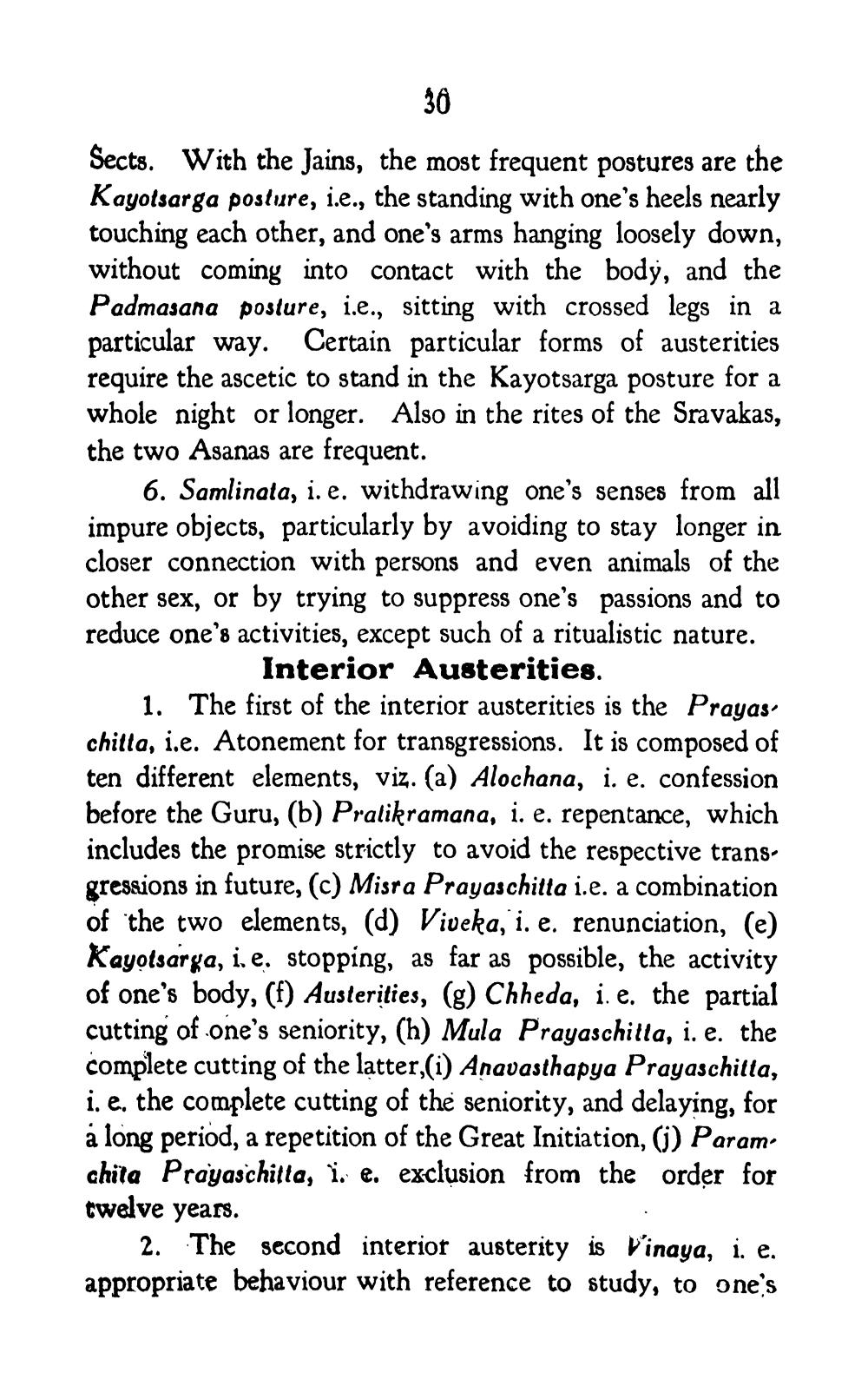________________
30
Sects. With the Jains, the most frequent postures are the Kayotsarga posture, i.e., the standing with one's heels nearly touching each other, and one's arms hanging loosely down, without coming into contact with the body, and the Padmasana posture, i.e., sitting with crossed legs in a particular way. Certain particular forms of austerities require the ascetic to stand in the Kayotsarga posture for a whole night or longer. Also in the rites of the Sravakas, the two Asanas are frequent.
6. Samlinata, i. e. withdrawing one's senses from all impure objects, particularly by avoiding to stay longer in closer connection with persons and even animals of the other sex, or by trying to suppress one's passions and to reduce one's activities, except such of a ritualistic nature. Interior Austerities.
1. The first of the interior austerities is the Prayas chitta, i.e. Atonement for transgressions. It is composed of ten different elements, viz. (a) Alochana, i. e. confession before the Guru, (b) Pralikramana, i. e. repentance, which includes the promise strictly to avoid the respective transgressions in future, (c) Misra Prayaschitta i.e. a combination of the two elements, (d) Viveka, i. e. renunciation, (e) Kayotsarga, i.e. stopping, as far as possible, the activity of one's body, (f) Austerities, (g) Chheda, i. e. the partial cutting of one's seniority, (h) Mula Prayaschitta, i. e. the complete cutting of the latter,(i) Anavasthapya Prayaschitta, i. e. the complete cutting of the seniority, and delaying, for a long period, a repetition of the Great Initiation, (j) Param chita Prayaschitta, i. e. exclusion from the order for twelve years.
2. The second interior austerity is Vinaya, i. e. appropriate behaviour with reference to study, to one's




